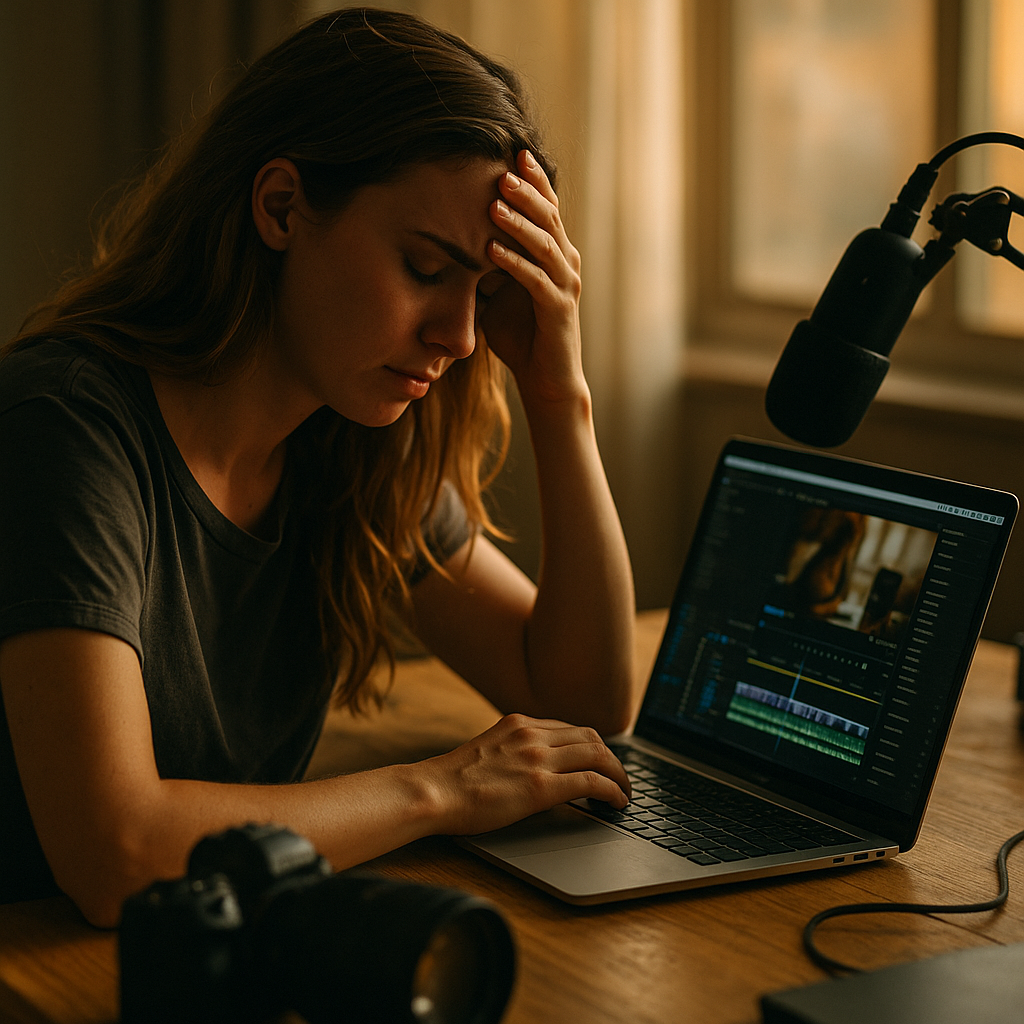The burnout economy is reshaping how digital creators work and thrive, demanding relentless output for shrinking rewards. As creators navigate shifting algorithms, audience expectations, and unstable income, many find exhaustion a persistent companion. Understanding the systemic causes behind creator exhaustion could reveal pathways toward a healthier, more sustainable creator landscape. Why do so many creative professionals struggle to find balance?
Algorithmic Pressures: The Unseen Hand Driving Creator Overwork
In today’s online platforms, algorithmic feeds determine who sees what. For creators, this means constantly adapting to opaque platform expectations. Changes in content ranking algorithms—particularly on YouTube, TikTok, and Instagram—have pushed creators to post more frequently, diversify formats, and chase rising trends. According to a 2025 Creator Economy Report, 78% of creators report feeling pressure to produce daily or even multiple times a day to maintain relevance and income stability.
This constant need to optimize and outpace shifting algorithms leads to a treadmill effect: creators are compelled to prioritize quantity over quality. The enduring unpredictability of platform traffic reinforces feelings of insecurity and encourages “hustle culture,” where taking breaks can result in lost followers and income.
Financial Instability and the Creator Economy’s Reward System
One core cause of creator exhaustion is financial instability. Monetization opportunities—from ad revenue and sponsorships to fan subscriptions—are frequently unreliable and subject to abrupt changes in platform policies. Recent studies show that only 12% of full-time creators earn more than $50,000 a year. The majority juggle multiple income streams, leading to stressful workloads and burnout risks.
This economic pressure is particularly acute for smaller creators who lack negotiating power with brands or platforms. Their incomes are susceptible to sudden drops, especially if they take a break or face algorithm changes. The gig economy model—where compensation is largely performance-driven—exacerbates uncertainty and makes it hard for creators to plan for the future.
Audience Expectations and the Myth of Infinite Creativity
The relationship between creators and audiences is intimate yet demanding. Fans expect consistent, authentic, and engaging content. Social media fosters a culture of immediacy, where extended absences can mean fading from public consciousness. Over 60% of creators surveyed in 2025 reported feeling guilty or anxious when considering time off, fearing that their audience will move on or engagement will decline.
This pressure to always “be on” can lead to creative fatigue, with creators feeling compelled to share even when uninspired or exhausted. The myth that creativity is endlessly renewable ignores the very real mental effort required to generate new ideas, manage communities, and stay relevant in crowded markets.
The Evolving Nature of Platform Policies and Digital Labor Rights
Despite their essential role in today’s digital economy, creators often lack formal labor protections. Algorithm changes, demonetization, or abrupt shifts in platform terms can jeopardize their livelihoods overnight. In 2025, creator advocacy groups have pushed for more transparent policies, but many platforms are slow to offer more predictable terms or basic protections.
This legal uncertainty adds to the stress load, with creators having to constantly monitor for policy updates. The lack of access to health benefits, paid leave, or collective bargaining rights further differentiates digital creators from traditional workers, compounding systemic burnout risks. New policy efforts are emerging, but comprehensive change remains a work in progress.
Sustainable Creator Practices: Building Boundaries and Community
Faced with these systemic challenges, creators are pioneering new approaches for sustainability. Setting boundaries around work hours, automating aspects of workflow, and taking scheduled breaks are becoming more widespread strategies. Community-driven initiatives—including creator support networks, co-ops, and collective bargaining groups—are providing emotional and professional support that platforms often don’t.
Educating audiences about the realities of creative labor and normalizing breaks is also gaining traction. Many creators now communicate openly about burnout, finding that transparent dialogue can foster more supportive communities and reduce unrealistic expectations. Experts recommend diversifying income portfolios and prioritizing mental health over short-term gains.
The Future of the Burnout Economy: Systemic Solutions and Industry Reform
As awareness of creator exhaustion grows, industry leaders are exploring reforms to address systemic flaws. Some social platforms are piloting features that prioritize creator wellbeing, such as more predictable monetization and dedicated mental health resources. Advocacy for digital labor rights is gaining momentum, with policymakers considering worker protections for online creators in 2025 retrospectives.
Crucially, combating the burnout economy requires collaboration among platforms, creators, audiences, and regulators. While individual strategies—like boundary setting and workflow automation—offer relief, only systemic changes will ensure a truly sustainable future for digital creators. Supporting creator health and stability will strengthen the creative economy for all.
Conclusion: The burnout economy reveals how digital systems and precarious financial models contribute to creator exhaustion. By understanding the root causes and championing sustainable practices, both creators and industry stakeholders can shape a healthier, enduring creative landscape in 2025 and beyond.
FAQs About Creator Burnout and the Burnout Economy
-
What is the burnout economy?
The burnout economy refers to systemic pressures in the digital creator industry that drive overwork, chronic stress, and creative exhaustion, especially due to unpredictable algorithms, financial instability, and high audience expectations. -
Why are creators especially vulnerable to burnout?
Unlike traditional employees, creators lack stable income, health benefits, and formal labor protections. They are subject to shifting platform policies, demanding audiences, and performance-based pay, all of which increase the risk of burnout. -
How can creators protect themselves from burnout?
Creators can set boundaries, diversify income streams, automate workflows where possible, maintain open communication with audiences, and connect with peer support groups. Prioritizing mental health and taking breaks when needed are crucial strategies. -
Are platforms taking action against the burnout economy?
Some platforms in 2025 are introducing wellbeing-focused features and more transparent monetization systems, but comprehensive labor protections for creators remain limited. Advocacy and policy efforts are ongoing to push for broader systemic reforms.
